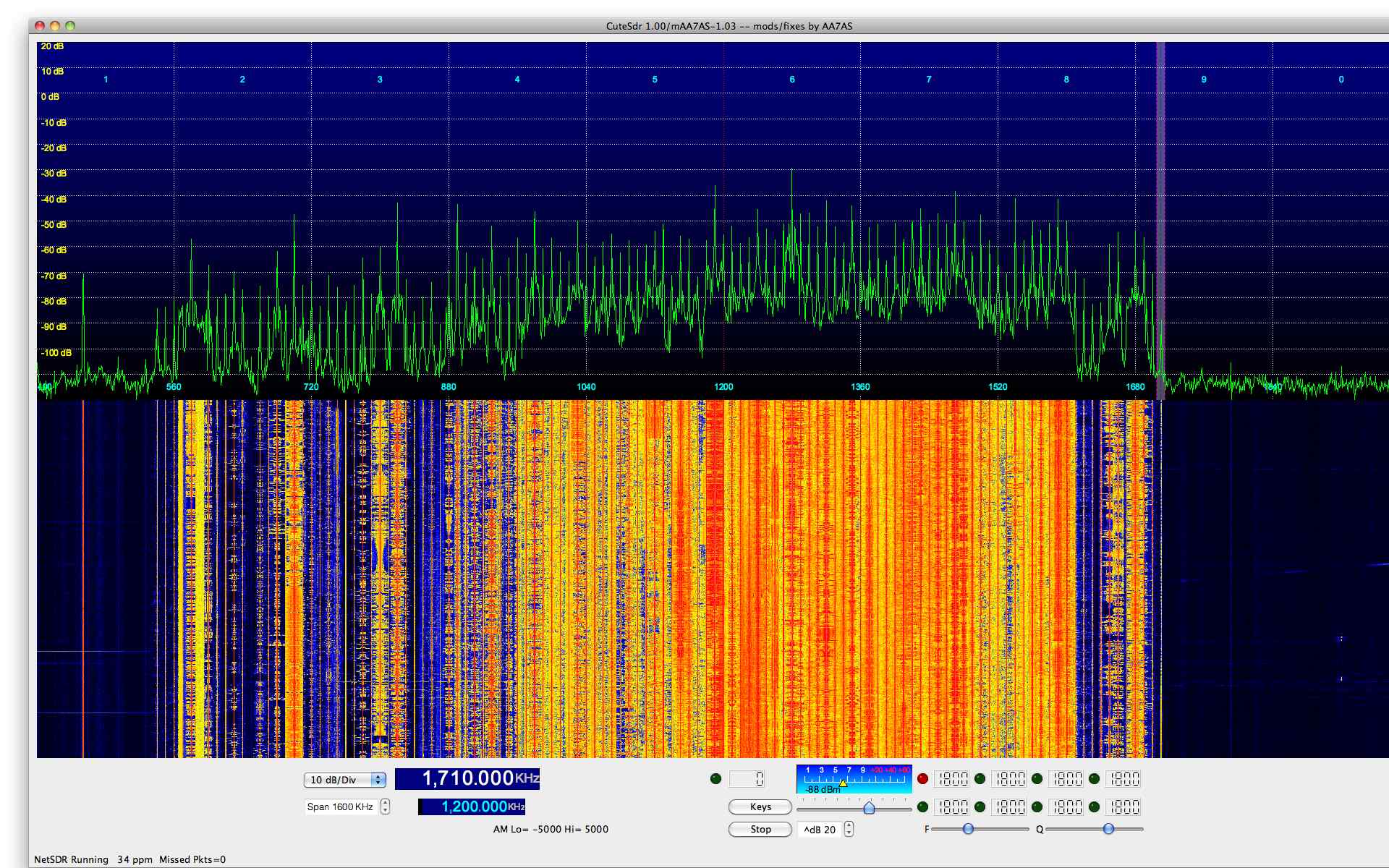A few months ago, I got a new radio – a netSDR from RF Space. I’ve had an SDR before, the SDR-14, also from RF Space. The major difference between the two is the maximum bandwidth. The SDR-14 used a USB interface, and was limited to 190 kHz. The netSDR, which uses an ethernet interface, has a maximum bandwidth of 1.6 MHz. In other worse, you could record the entire MW band.

Think of an SDR as a fast A/D (analog to digital converter) connected to your antenna. In the case of the netSDR, it is sampling at 80 MHz, which allows a theoretical maximum frequency of 40 MHz (half the sampling rate) to be received. In practice the maximum frequency is less than half, due to non ideal filters, 32 MHz in the case of the netSDR.
The A/D output is then mixed in quadrature with the NCO (numerically controlled oscillator, which sets the center frequency), and fed through various filters and decimators in the netSDR, reducing the sampling rate and bandwidth. For example, if the NCO is set to 6900 kHz, and the final bandwidth is 200 kHz, the output of the SDR will represent 6800 to 7000 kHz. In quadrature means that two NCO signals are used, both at the same frequency but 90 degrees out of phase with each other. This is often referred to as I/Q data. This data is sent to the computer over ethernet, where the application software uses various DSP (digital signal processing) routines to further filter and then demodulate it.
Generally, an SDR is used in two ways. First, you can use it like a normal radio. The output of the SDR is mixed as necessary with another NCO to produce a final center frequency equal to that of the station you want to listen to. This is then filtered to the desired bandwidth (comparable to the IF bandwidth of an analog receiver) and demodulated. All of this is done in software, of course, after the initial A/D conversion.
Second, you can display a waterfall of an entire chunk of the RF spectrum, allowing you to see what frequencies are in use. For example, you could look at 6800-7000 kHz (or even wider) and instantly spot a pirate station as soon as they go on the air. Likewise, with the 1.6 MHz bandwidth, you can look at the entire MW band (heck, LW as well) at the same time. Or almost the entire 10 meter ham band.
You also could demodulate multiple stations at the same time, as long as they are all within the bandwidth of the I/Q data being sent from the SDR to the computer. In theory, if your computer was fast enough, you could demodulate every single channel in the MW band at the same time.


Pingback: Admiral Wombat | HFUnderpants.com
Chris have you ever pursued a A to B receiver comparison between one of your analog receivers and the RFSpace gear?
I have read several reviews, of course, however a few words from you, someone with experience would be quite satisfying. I’m sure all you have time for are these type of requests !!!
You had mentioned that one of these days you intended to finish the blog on sdr equipment from what I remember.
Thanks for your many contributions. They are much appreciated and not by me alone.
Cheers weaksigs
Pingback: RFspace NetSDR | Shortwave Radio Index